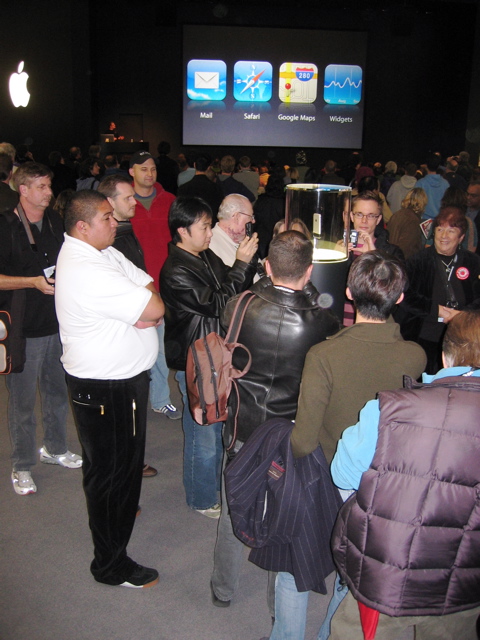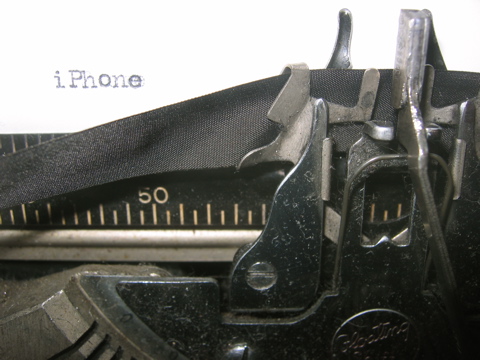iTouched an iPhone
Come, feel the hem of my garment, ye lowly. Or at least that’s what it felt like at Macworld Expo when I would mention, offhandedly, that I had iFondled an iPhone. As a bona fide member of the print press – representing The Seattle Times at the show – I received an executive briefing, and spent 10 minutes with the iPhone. I joked to Macworld editorial director Jason Snell, who also touched an iPhone, that we could put up a sign that read, “Hear about what it’s like to play with an iPhone: 25 cents.”
I didn’t realize then that Apple allowed only select press and partners to touch an iPhone. Samples were encased in glass pillars on the show floor. Demonstrations were continuous at Apple’s booth with a specially equipped iPhone that had its display inserted into a mockup on screen.
The iPhone feels like a device that fell through a wormhole from the future. I can safely say that I’ve never held anything but certain sculpted art objects that had the feel and nature of the iPhone. It’s definitely a work of art. [Writing about the iPhone on a current Macintosh feels a bit like this photo I took in the lobby of the W hotel. -Adam]
The touchscreen works as somewhat breathlessly promoted by Steve Jobs. Gestures result in almost instant responses. Learning to pinch and expand (or my preferred terms of “pucker” and “bloat,” suggested by a colleague) takes a matter of seconds. Navigating a Web page requires a little more effort because you have to sort of grab the page and move it around, and then pinch to zoom in on a story.
I didn’t have a chance to try typing, which several colleagues who’d used the iPhone said was rather satisfying. It offers predictive and what I’d dub “postdictive” suggestions. If you typed, for instance, “t” it might add an “h” as a suggestion, but if you followed the “h” with an “f” – typing “thf” instead of “the” – the iPhone would helpfully recognize you probably meant “the.” (I don’t know if it prescriptively changes it or just offers the change, however.)
The built-in speakers provided good sound, and navigating iTunes libraries was pretty straightforward. I’m not sure the navigation method of being able to scroll by throwing your finger – sliding it rapidly off the edge of the screen – is perfect, but it has a kind of artificial gravity to it that seems to work. There’s also friction, so the speed at which you throw the page doesn’t continue in pure Newtonian (the scientist, not the late Apple PDA) terms.
The iPhone would sell remarkably well as an iPod with no Wi-Fi and no phone capability. But based on reports following its announcement, a phone sold for $500 by a cell provider and with a required two-year commitment would retail for as much as $1,000. It’s likely the touchscreen represents a significant portion of that – perhaps a few hundred dollars. (Cancellation fees might require many hundreds of dollars to be repaid.)
Those that don’t opt to switch to Cingular and buy an iPhone may be waiting some time for costs to drop enough for the touchscreen and interface to make its way into the regular iPod lineup.

